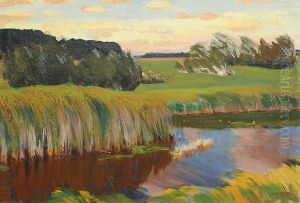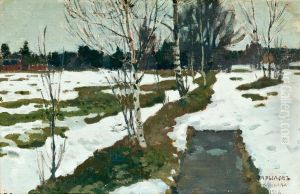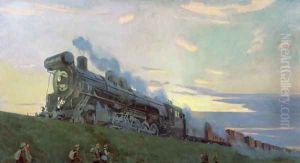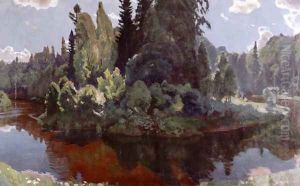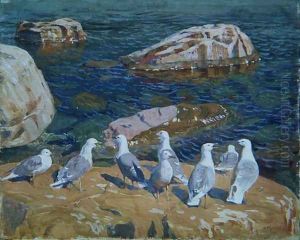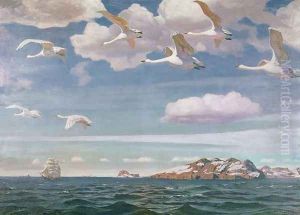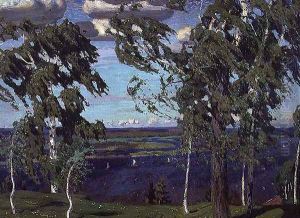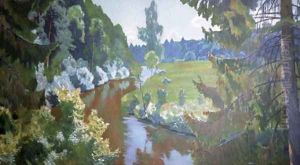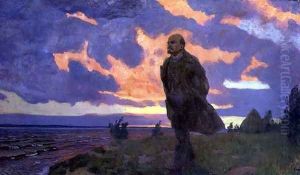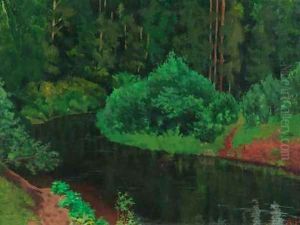Arkadij Aleksandrovic Rylov Paintings
Arkadiy Alexandrovich Rylov was a Russian and Soviet painter, who was born on January 29, 1870, in the village of Istobensk, in what is now the Republic of Komi, Russia. He was one of the most prominent Russian landscape painters of his time, known for his vivid and picturesque depictions of the Russian countryside and his innovative use of color. Rylov grew up with an appreciation for the natural world, which would become a central theme throughout his artistic career.
In 1894, Rylov moved to St. Petersburg to study at the Imperial Academy of Arts under the guidance of the famous Russian landscape painter Arkhip Kuindzhi, who was known for his romantic and somewhat mystical landscapes. Rylov was greatly influenced by Kuindzhi's approach to nature and his use of color and light. Rylov's early work reflected these influences, and he gradually developed his signature style, which combined elements of realism with a more symbolic and poetic vision of nature.
Throughout his career, Rylov participated in various exhibitions, including those of the Peredvizhniki (the Itinerants), a group of Russian realist artists who formed a cooperative in protest against academic restrictions. His work resonated with the Russian public and critics alike for its embodiment of the Russian spirit and the beauty of the Russian landscape.
Rylov was not only a painter but also a teacher. In 1901, he began teaching at the St. Petersburg School for the Encouragement of the Arts and later at the St. Petersburg Academy of Arts. He influenced many young artists with his teaching and was respected for his dedication to the development of Russian art.
During the Soviet era, Rylov's work gained even more significance as it aligned with the regime's promotion of art that was accessible to and celebrated by the masses. His landscapes were viewed as embodying the idealized image of the homeland, and he was recognized by the Soviet government for his contributions to art.
Arkadiy Rylov passed away on June 22, 1939, in Leningrad (now St. Petersburg), leaving behind a legacy of vibrant landscapes that continue to be celebrated for their lyrical beauty and emotional depth. His works can be found in various museums and galleries in Russia, and he is remembered as one of the key figures in Russian landscape painting.
